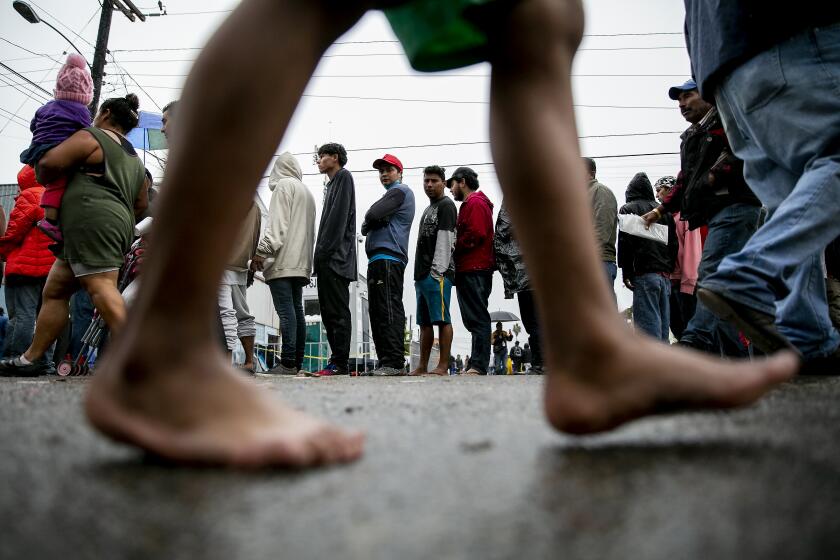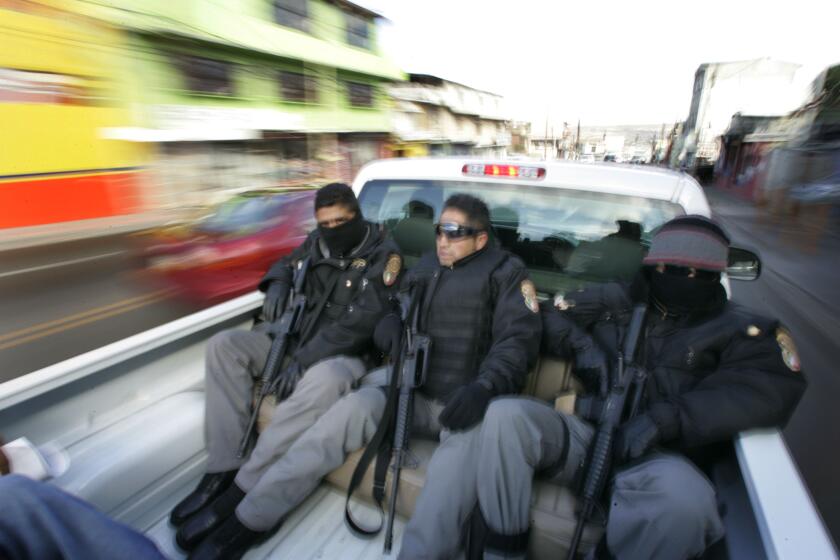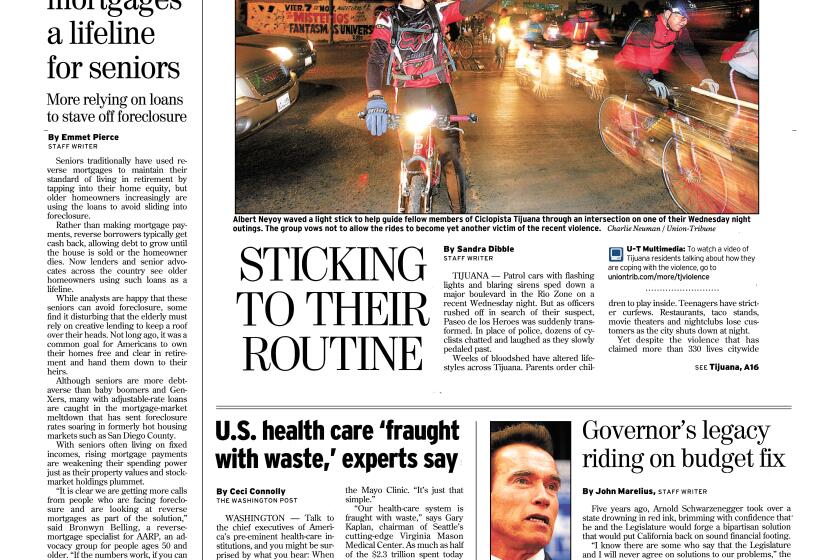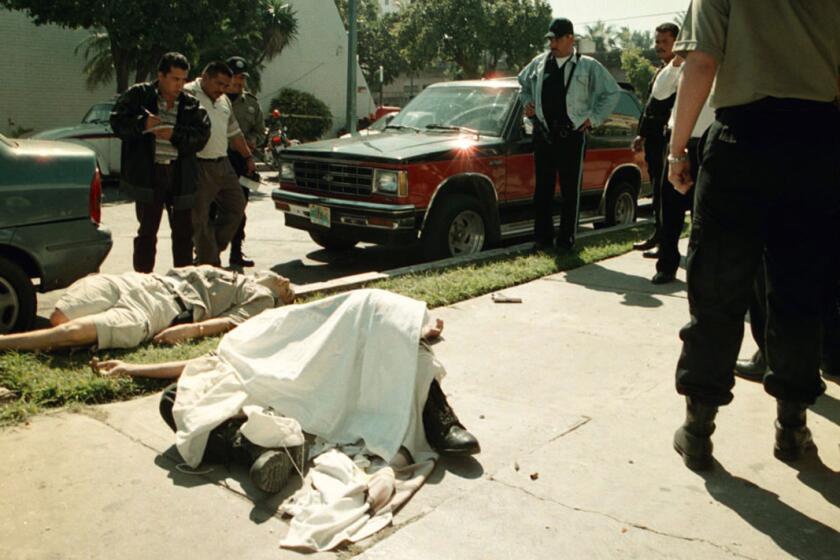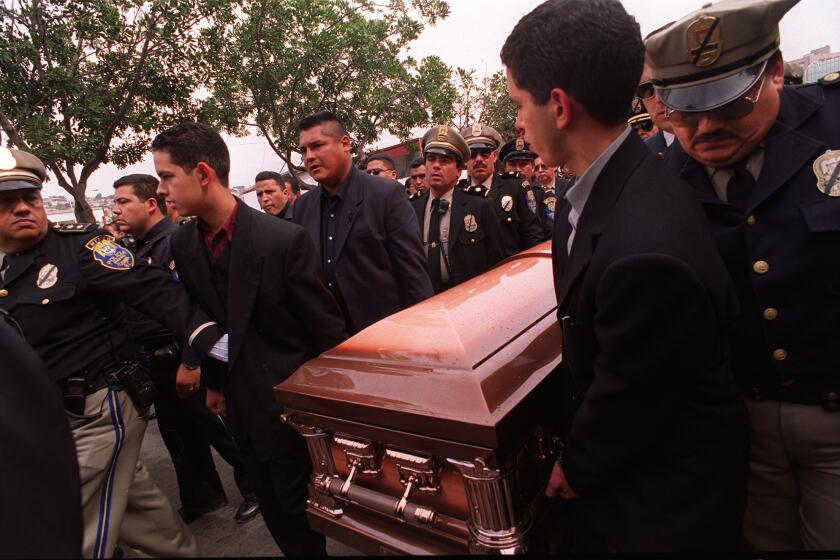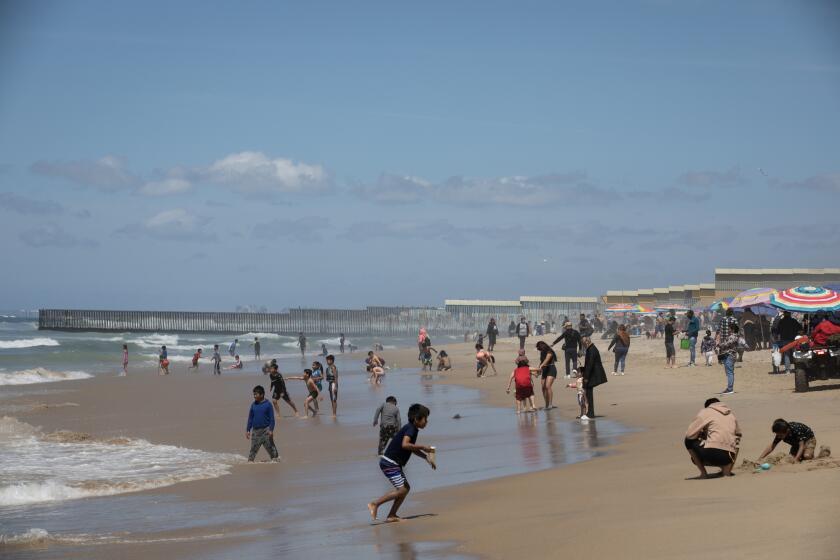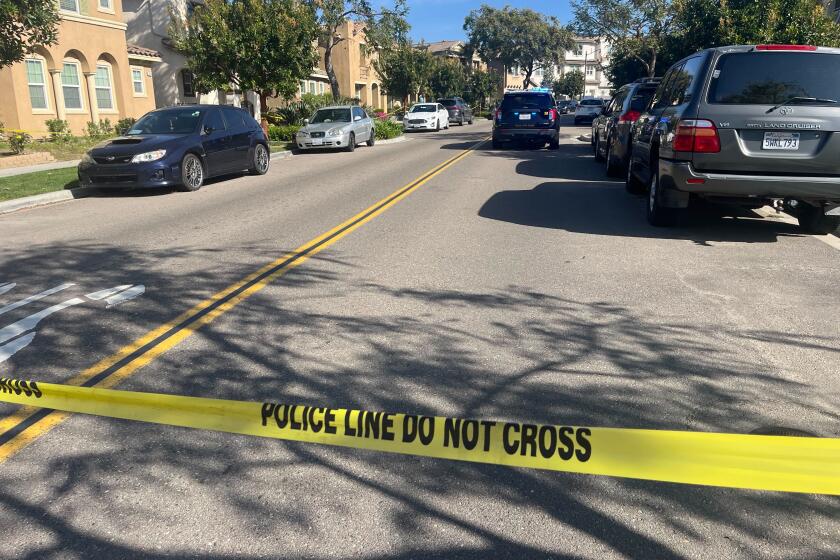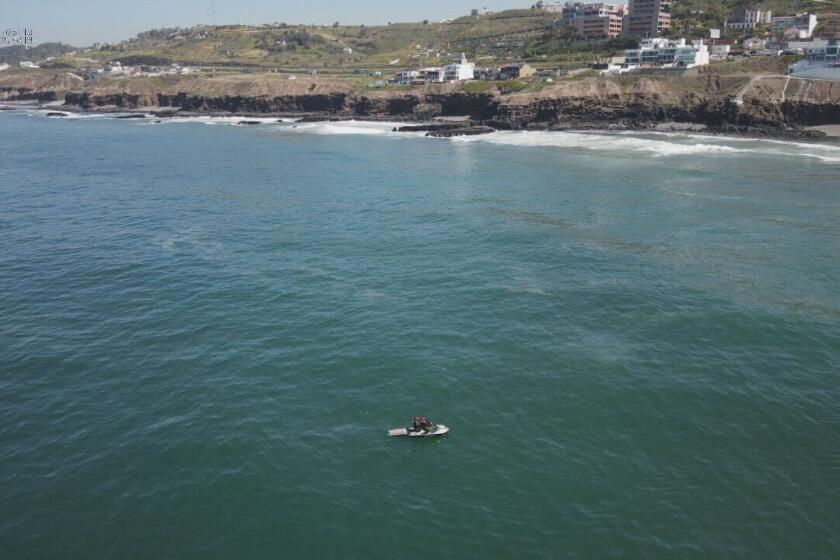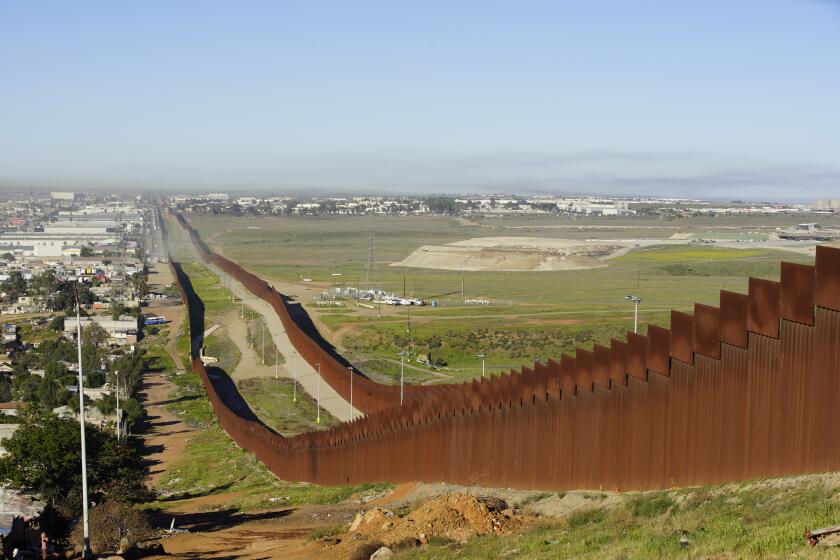Border crossing revamp comes with art
Northbound drivers at the San Ysidro border crossing can look forward to the opening of more lanes next month — and hopefully shorter lines. As they enter the United States, they will also encounter art: ripples of bright blue light whose constant motion is triggered by the passing cars.
As the busiest border crossing in the western hemisphere undergoes a massive $741 million reconstruction, security and efficiency have been the foremost concerns. But art? The completed San Ysidro Port of Entry will have several large-scale pieces.
Two artworks already have been funded, one of them scheduled for unveiling in November, a month after the expected opening of all northbound vehicular inspection lanes and inspection booths. This month, the U.S. General Services Administration, which is overseeing the reconstruction, said $500,000 is available for the next round, and invited qualified artists to apply by Oct. 6.
The rebuilding of the port of entry is a phased, multi-year undertaking that includes additional inspection booths, new pedestrian processing facilities, and the rerouting of Interstate 5. It has been approved by Congress, but tight federal budgets of recent years have slowed its progress. Two of the three phases now have been funded, and the Obama administration has included $226 million in its proposed fiscal 2015 budget for the project’s completion.
Federal regulations require the GSA to allocate a half percent of the cost of each new project for public art, and funding for the San Ysidro art work is tied to the various phases.
Under the first phase, which has involved more northbound vehicle inspection booths and a new southbound pedestrian crossing, the GSA allocated $912,000 for two commissions: $561,000 for J. Meejin Yoon’s “Double Horizon” and $350,000 for a piece by Seattle artist Norie Sato to be installed in the southbound pedestrian lane.
Yoon’s piece is a narrow 520-foot-long installation consisting of programmable light-emitting diodes, or LEDs, and is being mounted to the edge of the canopy above the inspection booths that face the northbound lanes. The drivers will not only view its motion, but trigger it as they cross.
“I wanted the piece to be as minimal as possible,” Yoon, head of the Department of Architecture at the Massachusetts Institute of Technology, said in a telephone interview from her Boston studio. “I wanted it to not be a pattern, but truly an index or a measurement of the flow through it. It becomes a dynamic display as people cross.”
Sato’s “Trail Parkway,” to be completed in March, is a stainless steel mesh canopy that offers partial shade to pedestrians crossing into Tijuana from San Diego. According to GSA’s description, it “honors the ideas of protection, security and safety that tie into the work of the border station,” and is “based loosely on eagle feathers/wings as well as the natural shapes of leaves from agave and other plants of the region.”
Sato is the Seattle-based designer behind “Spirit of Silence,” a meditation space that opened in June as part of Lindbergh Field’s $907 million expansion. In an interview, she said that her aim in San Ysidro “is make that experience of going back to Mexico more friendly.”
The audience for these new border works will be sizable: San Ysidro is the largest port of entry in the western hemisphere, according to GSA, with an average 50,000 northbound vehicles and 25,000 pedestrians crossing daily. The San Diego Association of Governments projects an 87 percent increase in traffic by the year 2030.
Champions of the crossing say that increasing the port’s efficiency is critical for the closely tied economies on both sides of the border, but also for promoting social and family connections and cultural ties.
“This crossing is not only about cars but about people, and therefore should be organized around healthy public spaces,” said Teddy Cruz, professor at University of California San Diego’s Department of Visual Arts. “While security is important, it should not always trump every other public interest.”
South of the border, Mexico is also making plans for a major art work at the El Chaparral port of entry. “Door of the Americas” is a 160-foot-tall red steel sculpture by the Mexican artist Sebastian, who is known for monumental works. The Colegio de la Frontera Norte, a Mexican government think tank, has been spearheading the project, which until now has relied on private donations made the the artist’s foundation.
Tonatiuh Guillén, the Colegio’s president, said that fundraising has been slower than anticipated, and that so far, about three million pesos, more than $226,000, have been raised — less than a quarter of what is needed to complete it. He does not discount seeking government funding.
Shorter term, the Mexican National Council for Culture and the Arts is funding two murals by the Baja California artist Alvaro Blancarte. One is planned just beyond the El Chaparral crossing, to be seen by drivers as they enter the Tijuana, the other would be by Mexico’s pedestrian entrance.
The U.S. government has incorporated artwork into its public buildings since the 1850s. Established in 1949, the GSA oversees many of these objects, with a fine arts collection that now numbers 26,140 pieces.
The artwork is selected through panels that include art professionals, civic and community representatives, the project’s lead design architect and GSA staff, according to the agency’s description of the program.
The pieces must be site-specific, and permanent, said Traci Madison, a spokeswoman for GSA. In most cases, 80 percent or more of the agency’s arts budgets are spent on materials, fabrication, shipping and installation costs, Madison said.
Jason M-B Wells, executive director of the San Ysidro Chamber of Commerce, and spokesman of the San Ysidro Smart Border Coalition, has closely followed the San Ysidro modernization project for its effect on his border community. Strong art pieces will enhance the crossing, he said. He applauds the program.
“Is it a worthwhile expenditure? Absolutely,” he said. “The beautification of the project is extremely important to us because it’s our front door.”
sandra.dibble@utsandiego.com
(619) 293-1716
Twitter: @sandradibble
Get Essential San Diego, weekday mornings
Get top headlines from the Union-Tribune in your inbox weekday mornings, including top news, local, sports, business, entertainment and opinion.
You may occasionally receive promotional content from the San Diego Union-Tribune.

